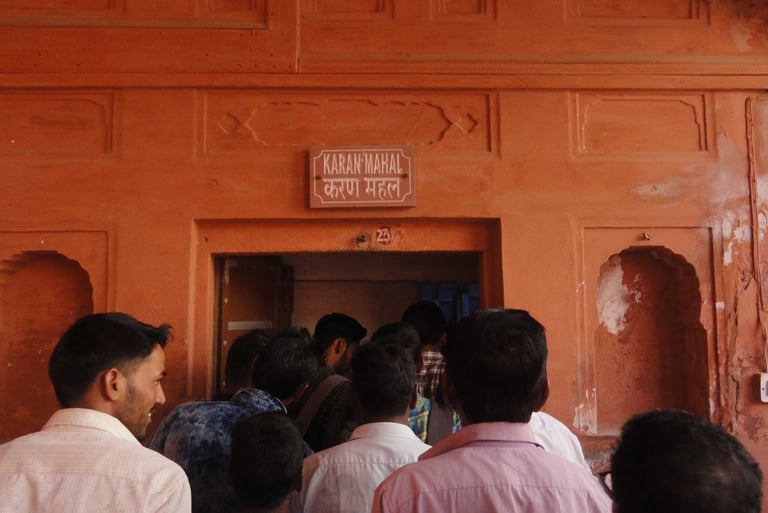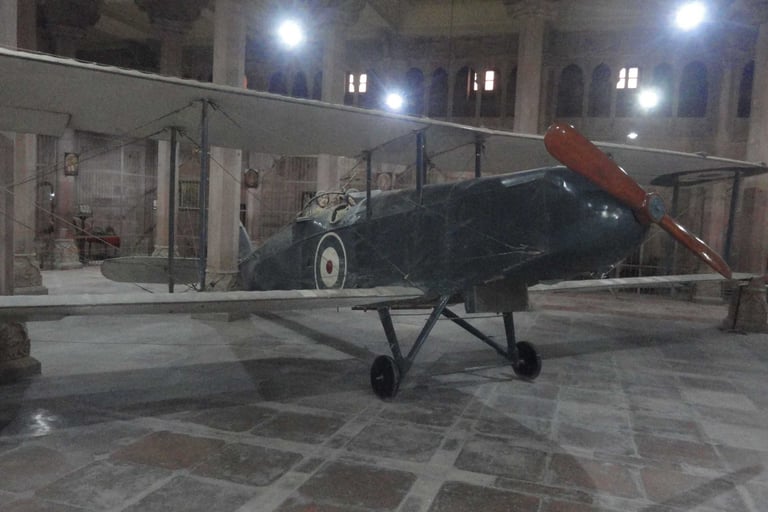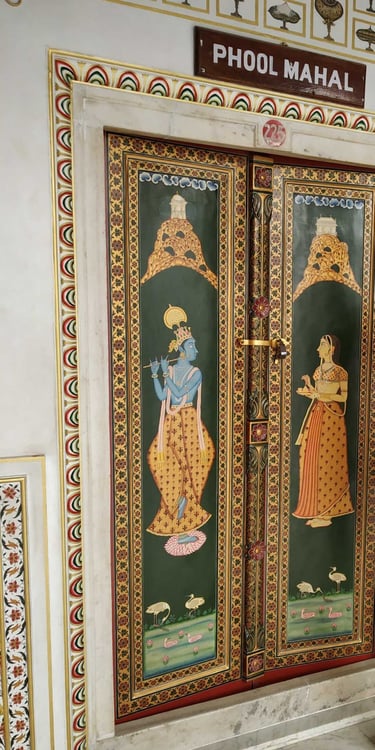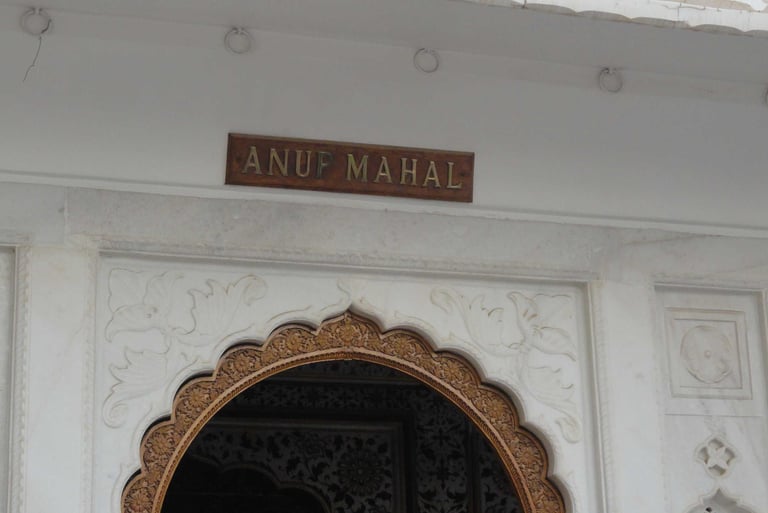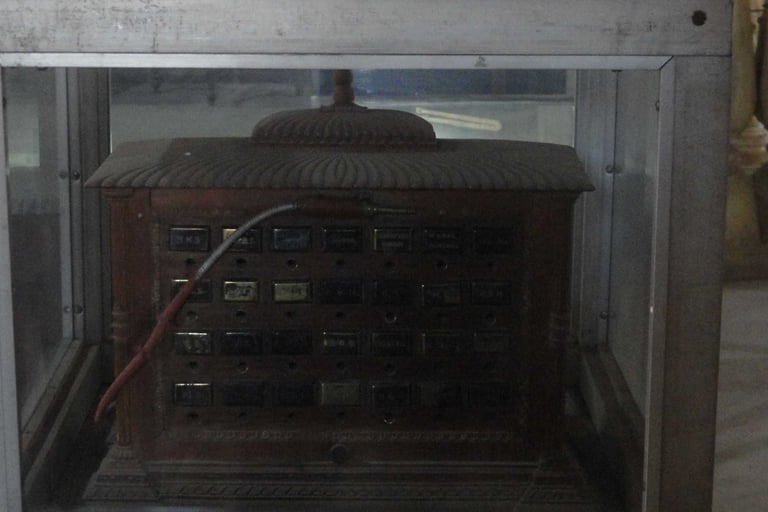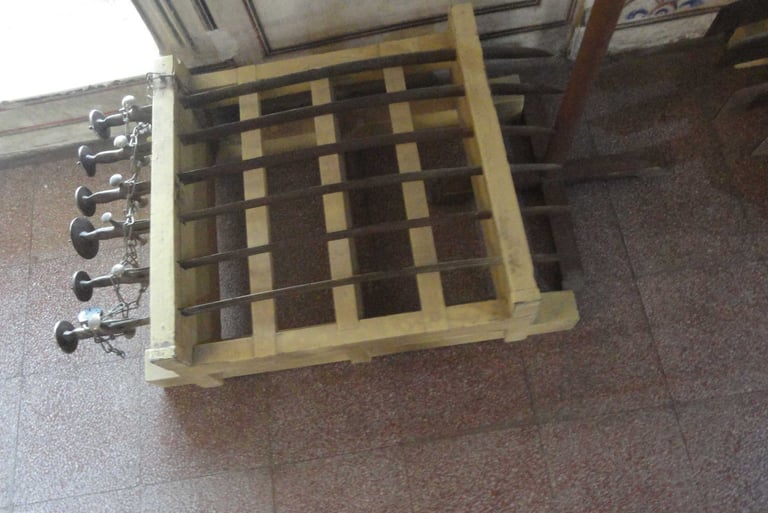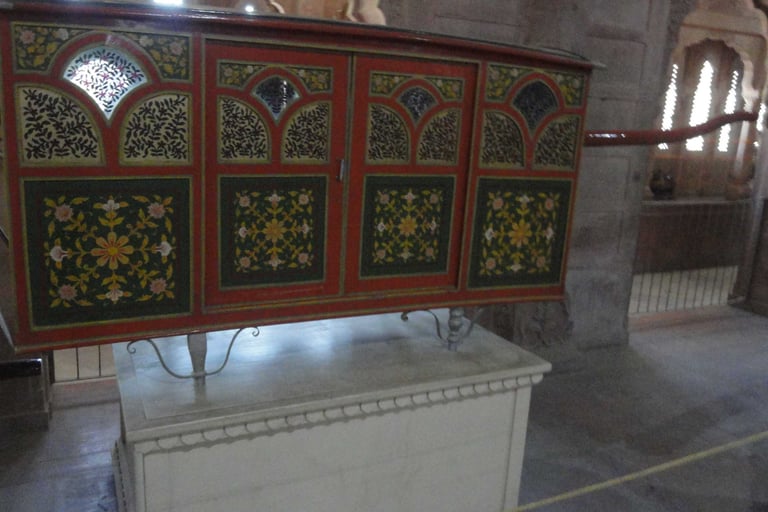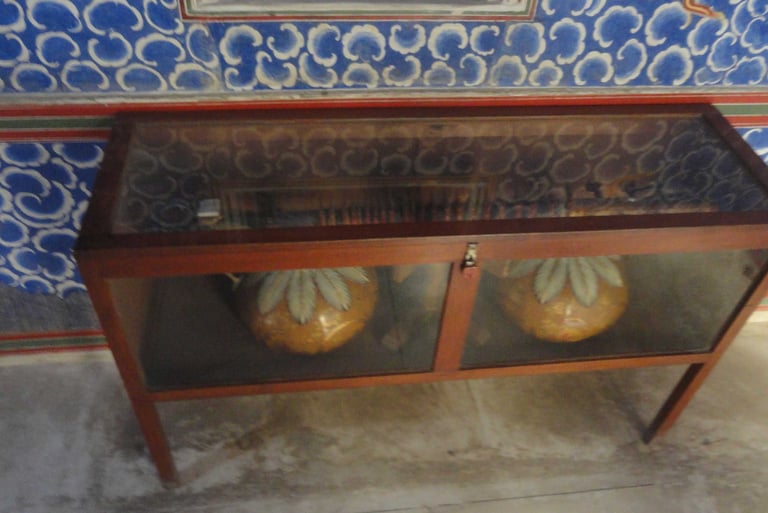Junagarh Fort Rajasthan: Complete Travel Guide & History
Discover Junagarh Fort in Bikaner, Rajasthan. Explore its rich history, stunning architecture & plan your visit with this complete travel guide.
RAJASTHAN
Arghyaraj Basu
6/29/20257 min read
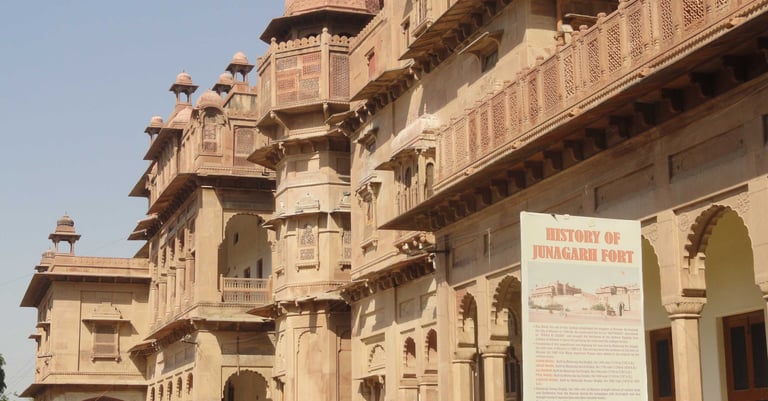

Nestled in the heart of the vibrant city of Bikaner, Rajasthan, stands the magnificent Junagarh Fort – a sprawling complex that whispers tales of valor, royalty, and architectural brilliance. Unlike many of its counterparts perched on hilltops, Junagarh Fort uniquely sits on the plains, a testament to its formidable defenses that have seen it remain unconquered throughout its long history.
If you're planning a trip to the regal state of Rajasthan, a visit to Junagarh Fort (Bikaner Fort) is an absolute must to immerse yourself in the rich heritage of the region.
A Glimpse into History & Architectural Splendour
Originally known as Chintamani, the foundations of the fort were laid by Rao Bika in 1478. However, the present grand structure was primarily built between 1588 and 1593 AD by Raja Rai Singh, the sixth ruler of Bikaner, who also served as a general in the Mughal emperor Akbar's army. His vision, coupled with the skilled craftsmanship of the era, resulted in a fort that is a remarkable amalgamation of Rajput, Mughal, and Gujarati architectural styles.
Constructed predominantly from red sandstone, the fort's robust exterior is adorned with intricate carvings, while its interiors showcase dazzling white marble, gold leaf work, and delicate mirror mosaics. The fort's defensive walls, stretching over 986 meters and punctuated by 37 bastions, encircle a vast area of palaces, courtyards, and pavilions, each narrating a different chapter of its illustrious past.
Exploring the Treasures Within
A journey through Junagarh Fort is like stepping back in time, revealing the exquisite artistry and grandeur of its royal inhabitants. Here are some of the key attractions you shouldn't miss:
The Grand Gates:
Suraj Pol (Sun Gate): The fort's main entrance, built from yellow sandstone, glows beautifully in the morning sun and is flanked by two impressive red sandstone elephant statues.
Daulat Pol: Noteworthy for the handprints of royal ladies who committed Sati (self-immolation) on the pyres of their deceased husbands, a poignant reminder of past traditions.
Other inner gates include Chand Pol, Karan Pol, and Fatech Pol.
Exquisite Palaces:
Karan Mahal: Built in 1680 by Maharaja Karan Singh to commemorate his victory over the Mughal Emperor Aurangzeb, the Karan Mahal is one of the most magnificent palaces within Junagarh Fort. It served as a public audience hall. Its opulent design is characterized by exquisitely carved marble pillars, intricate mirror work, and elegant stained-glass windows that bathe the interiors in a kaleidoscope of colors. The present-day Karan Mahal also incorporates later additions by Maharaja Anup Singh and Maharaja Surat Singh, featuring inlaid polychrome glasses and gold and red paints, creating a rich visual tapestry.
Phool Mahal (Flower Palace): As its name suggests, the Phool Mahal, or Flower Palace, is a celebration of floral artistry. It is believed to be the oldest section within the fort, showcasing a distinctive Mughal architectural style. Its walls and ceilings are intricately embellished with delicate floral patterns and exquisite frescoes, creating a serene and aesthetically pleasing environment that transports visitors to a bygone era of beauty and tranquility.
Anup Mahal: The Anup Mahal is arguably the most intricately decorated palace in Junagarh Fort and served as a private audience hall and administrative headquarters. Its grandeur is breathtaking, with ornate wooden ceilings inlaid with mirrors and gold leaf paintings that shimmer with every ray of light. The use of fine Italian tiles on the floor and beautiful lattice windows and balconies further enhances its splendor. The sheer opulence of this mahal provides a vivid glimpse into the luxurious lifestyle of the Bikaner royals.
Badal Mahal (Cloud Palace): An extension of the Anup Mahal, the Badal Mahal, or Cloud Palace, is a unique chamber designed to evoke the feeling of monsoon clouds. Its walls are adorned with beautiful frescoes depicting monsoon clouds, often with scenes of Lord Krishna and Radha amidst them. The blue and white outlines of the clouds create a serene and dreamlike atmosphere, a deliberate contrast to the arid desert outside, allowing the Maharaja to experience a touch of the much-coveted monsoon. Paintings of Shekhawati Dundlod chiefs paying respects to the Maharaja of Bikaner can also be seen here.
Chandra Mahal (Moon Palace): Considered the most regal and luxurious palace within Junagarh Fort, the Chandra Mahal lives up to its name, signifying the moon's serene beauty. It houses gold-plated deities and paintings inlaid with precious stones, exuding unparalleled grandeur. The royal bedroom, in particular, is a marvel, featuring strategically placed mirrors that create fascinating reflections and enhance the sense of spaciousness and luxury.
Ganga Mahal: Built by Maharaja Ganga Singh, a visionary ruler, the Ganga Mahal showcases a harmonious blend of Mughal and Rajput architectural elements. This palace now houses a significant portion of the Junagarh Fort Museum's exhibits. One of its most unexpected and fascinating displays is a De Havilland DH.9 biplane from World War I, presented to Maharaja Ganga Singh by the British government in recognition of the Bikaner State Forces' valiant contribution to the war effort.18 This unique artifact highlights the progressive vision of Maharaja Ganga Singh and the state's role in global events. The palace itself contributes to the museum's rich collection of royal artifacts.
Hawa Mahal (Palace of Winds): While not as grand as its namesake in Jaipur, the Hawa Mahal within Junagarh Fort served a similar purpose. With its intricate lattice windows, or jharokhas, it allowed the royal ladies to observe the activities in the courtyards and outside without being seen themselves, adhering to the purdah system. These finely carved screens also facilitated natural ventilation, providing a cool respite in the desert heat.
Gaj Mandir: The Gaj Mandir, a magnificent set of apartments, was a suite belonging to Maharaja Gaj Singh. It is considered one of the most lavish in the entire fort, dating from the mid to late 18th century. Its interiors are adorned with exquisite gold paint, vibrant murals, and intricate work in sandalwood and ivory. The extensive use of mirrors and stained-glass windows creates a dazzling and opulent environment, reflecting the artistic tastes and wealth of the Maharaja.
Temples:
Har Mandir: The royal family's private temple, dedicated to Lord Lakshmi Narayan and Goddess Lakshmi, adorned with beautiful marble carvings.
Ratan Behari Temple: Located near the fort, this temple is dedicated to Lord Krishna and showcases an Indo-Mughal architectural style with white marble.
Junagarh Fort Museum:
Housed within the fort, the museum is a treasure trove of Bikaner's royal past. It displays an impressive collection of artifacts, including ancient weaponry, exquisite royal costumes, jewels, handwritten Sanskrit and Persian manuscripts, royal palanquins, and historic paintings and murals that offer a deep dive into the region's rich heritage.
Plan Your Visit: Timings & Essential Information
Opening Hours:
Junagarh Fort is open daily from 10:00 AM to 4:30 PM.
Entry Fees (as of current information):
Indian Citizens: INR 50 per person
Foreigners: INR 300 per person
Ordinary Camera: INR 30
Video Camera: INR 100
Time Required:
Allocate approximately 2 to 3 hours to comfortably explore the fort, its palaces, and the museum.
Contact Information:
For inquiries, you may contact the Raja Rai Singh Trust at 0151-2202297.
FAQs About Junagarh Fort
Q1: What is the best time to visit Junagarh Fort?
A1: The ideal time to visit Junagarh Fort and Bikaner is during the cooler months, from October to March. The weather is pleasant, making it comfortable for exploring the fort and other outdoor attractions. Visiting early in the morning or late in the afternoon is recommended to avoid the midday heat, especially if you visit just outside peak season.
Q2: Are guided tours available at Junagarh Fort?
A2: Yes, guided tours are available and highly recommended. A knowledgeable guide can provide valuable historical context and fascinating stories about the fort's inhabitants and its various sections, significantly enhancing your experience.
Q3: Can I take photographs inside the fort?
A3: Photography is generally allowed in most areas of the fort, but there might be specific sections or exhibits, particularly in the museum, where flash photography or even non-flash photography is prohibited. Always look out for signs indicating restrictions. Camera fees apply (refer to entry fees).
Q4: Is the fort accessible for people with mobility issues?
A4: While the fort is located on a plain, exploring its various palaces involves a fair amount of walking, climbing stairs, and navigating different levels. Some areas might not be easily accessible for visitors with severe mobility issues.
Q5: What else can I see near Junagarh Fort in Bikaner?
A5: Bikaner offers several other attractions, including the Lalgarh Palace, the National Research Centre on Camel, Karni Mata Temple (the "Rat Temple" in Deshnok, a short drive away), and the Prachina Museum, which showcases royal costumes and textiles.
Junagarh Fort stands as a proud sentinel of Bikaner's rich past, offering a captivating journey through centuries of architectural evolution and royal narratives. A visit here is not just a sightseeing trip, but an immersive experience into the heart of Rajasthan's regal legacy.
